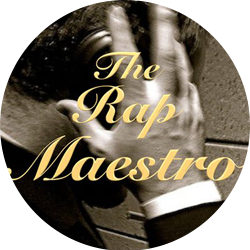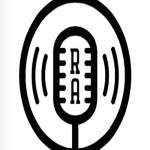This is part 2 of an ongoing series of interviews with “How To Rap” author Paul Edwards. You can see part 1 here.
—–
1- What formal training or education do you have in anything that
might help you analyze or talk about rap in an in-depth manner? For
example, are you a rapper, do you have a degree in
music/African-American studies/literature/journalism, etc?
As far as my academic background, I have a masters degree in
Postmodernism, Literature, and Contemporary Culture and a BA in
English literature, both from Royal Holloway, University of London.
With both of those I wrote the final dissertations on hip-hop music
and I also worked hip-hop into many of the other essays as well. My
lecturers were really open to me studying hip-hop and gave me a lot of
support, I think it helped they were big music fans and were like,
“yeah, of course you can study The Chronic!”
Then musically, I play the Arabic drum, the doumbek—I grew up in the
Middle East and so I heard a lot of that kind of music, some of it is
very percussion heavy. So learning the rhythms for that really
influenced my interest in the rhythmic aspects of rapping. I also
always loved making beats, usually using step sequencer types of
programs, where the percussion notes are laid out visually in a grid,
so that fed into how I looked at rapping as well.
Also most of the best education came from interviewing so many rappers
directly, because you get to hear so much first hand information from
the actual people who developed the art form. You get to know which
rappers everyone learned from and what they listened to pick up the
techniques.
2- Kool G Rap and Gift Of Gab both wrote forewords for these 2 books.
How did those collaborations come together?
I had already interviewed them so I was already in contact with them
and their management, so when it came time to get forewords I reached
out to them again—it was really about finding a good fit. I felt like
Kool G Rap was perfect for the first book, as he’s a very technically
adept MC and a true pioneer and Gift of Gab fit the second book, as he
has such an incredible range of flows and deliveries.
3- Consider a hypothetical but logical extension of the project found
in these 2 books. If there was a complete school, with classes and
curriculum and everything, where people learned “how to rap”, what do
you think it would look like? Is it even possible?
Going towards that, there are already rapping courses that the How to
Rap books are on, in different universities—I’ve seen the books pop up
on a number of reading lists. For example there is one at University
of California, Berkeley called “Tupac, The Evolution of Hip Hop, and
How to Rap” where they write a “two verse rap song” by the end of it
and “Words, Beats, & Life” also have MCing classes using How to Rap –
http://www.wblinc.org/classeslocations/emceeingrapping/ …and
University of North Carolina have their “Next Level” program where
they travel around teaching rapping and DJing and dance, I’m not sure
if they use books for doing that.
As far as a complete school specifically set up to teach just rapping,
I’m not sure if that’s entirely feasible, but then again there is
Scratch DJ Academy for DJs, so it’s a possibility. As far as the
actual classes, I would assume it would be split up in terms of
content, flow, and delivery, with different specialists teaching those
parts and at some stage there would be drills and exercises, the same
as learning anything. Like first you learn the theory behind
everything, then you move onto the practical stuff where you write a
lot of metaphors or story raps, or on the flow side you learn how to
do triplets and practice them over and over until you get to a certain
level, and then you’re taught a new area to master.
4- Based on your knowledge of where rap — strictly rap, not its beats
or anything — has come from, can you make any guesses or informed
conjectures about where it might go?
I would hope eventually we would get some kind of “prog-hop” type of
thing, like how rock went through a prog-rock phase, with lots of
different time signatures, weird structures, intricate back-and-forth
vocals, maybe really off-the-wall stylistic raps that are the
equivalent of experimental guitar solos, maybe with distortion and
wild effects on the vocals and that kind of thing. I think that would
bring us some really interesting music. It would probably come to a
natural end as well once it had exhausted itself, just like prog-rock
did, but it would be great phase to go through just to see what
hip-hop would sound like in that framework.
Those things have been done briefly in little bursts here and there by
groups like Latyrx doing two verses at the same time that interacted
in certain places and great back-and-forth sections, Blackalicious
with tracks like “Chemical Calisthenics” with rapping that followed
all the changes in the beat, the Beastie Boys had “B-Boy
Bouillabaisse” with an unusual structure and they used distortion on
their voices on other tracks, and Freestyle Fellowship had tracks with
melodic jazz scatting type of things going on. But I’d like to see
that sort of thing become a full sub-genre with lots of artists all
pushing the boundaries like crazy for a while.
Then maybe that would be followed by the equivalent of punk, where it
would all get stripped back down to just huge drums and raw distorted
sounds, a bit like early Run-DMC tracks. That would be an interesting
movement to see as well.
Now that’s where I hope it will go at some point, but being more
realistic I think it’s likely to stay as it is. And that’s staying
reliant on successful hit formulas, where the rapping is simpler so
that the vast majority of people can understand it, with keyboardy
club beats that you can dance to, and either R&B choruses or simple
chanted catchy choruses taking up most of the song. That’s the hit
formula that brings in the money and so I think few people are willing
to divert from that formula at the moment.
5- If there was one thing about rap as a genre that you could change,
what would it be?
I would bring back sampling in a big way. Breaks and samples are where
the music came from and in the late 80s and early 90s the boundaries
were really pushed with sampling as an art form, and it resulted in
hip-hop’s “golden age” with all types of different styles and sounds
and influences. Unfortunately that ended when more and more lawsuits
started popping up around sampling and it became more popular for
people to just sample really obvious hit records instead of creating
innovative sound collages.
And I think those beats with a lot of sampling brought the best out of
the MCs as well because the beats were more organic and had a more
textured, layered sound, so it inspired the MCs to make
timeless-sounding records. It also meant that people brought in
samples from jazz, blues, rock, classical, dance, country, pretty muc
everything you can think of, and that made hip-hop from the golden age
a lot more varied and colorful.
6- Rap, as an art form, is treated with less respect by the media and
society at large than other musics. For instance, no rap artist is
ranked higher than 44th on Rolling Stone magazine’s list of the “100
Greatest Artists Of All Time”:
http://www.rollingstone.com/music/lists/100-greatest-artists-of-all-time-19691231/public-enemy-20110420
Furthermore, rap lyrics have been admitted as evidence in criminal trials:
http://articles.latimes.com/2012/may/10/nation/la-na-nn-rap-lyrics-at-heart-of-murder-trial-20120510
http://www.nytimes.com/2014/01/08/nyregion/seeking-clues-to-gangs
and-crime-detectives-monitor-internet-rap-videos.html
while violent rock lyrics are not.
Also, President Obama was criticized by some in the media:
http://nation.foxnews.com/common/2011/05/09/michelle-obama-hosting-vile-rapper-white-house
when he invited Chicago rapper Common to the White House in 2011. The
administration was attacked by critics for supporting Common, a
supposedly “controversial” and “vile” rapper, even though Common’s
real message at the small concert was specifically against violence,
as he performed such lyrics as, “Destiny’s children — survivors,
soldiers — in front of buildings, their eyes look older / It’s hard to
see blessings in a violent culture.” There was little similar protest
against past White House guests like musician James Brown in 2001,
who, unlike Common, has been convicted of multiple crimes that
involved drugs, weapons, and domestic violence.
Finally, a 2013 article by Juan William:
http://online.wsj.com/news/articles/SB10001424127887324619504579028691595414868
decries the supposed differences between African-American music made
at the time of Martin Luther King, Jr.’s 1963 “I Have A Dream Speech”
in Washington, D.C., and the music supposedly made by African
Americans today. As he writes, “The emotional uplift of the monumental
march is a universe of time away from today’s degrading rap music —
filled with the n-word, bitches, and ‘hoes’ [sic] — that confuses and
depresses race relations in America now.” While focusing on one 2013
song from a rapper he criticizes by name, Jay-Z, Williams ignores
other empowering songs by the same artist.
Why do you think there is this difference in how rap is treated, when
compared to other types of music?
That’s an interesting question, but for me personally, I try to give
as little time and thought as possible to anything to do with how
outsiders see hip-hop. And by “outsiders” I mean anyone who doesn’t
already “get” and appreciate hip-hop or isn’t willing to try to
appreciate it. It’s tempting for me to write loads of words trying to
rebuff every criticism every person has of hip-hop and to try to
understand why people might treat it differently to other types of
music, and I did briefly deal with some of the common criticisms of
hip-hop in “The Concise Guide to Hip-Hop Music,” because that book
called for a little of that.
But I honestly find that time is much better spent simply studying and
preserving hip-hop and not getting drawn into the agendas of
critics—critics who usually aren’t willing to take the time to
understand hip-hop even if you present them with perfect arguments. I
do my work and research for people who already love hip-hop and
respect it and people who genuinely want to know more about it. I find
it’s much more rewarding giving people information they appreciate,
rather than trying to change the minds of people who already made up
their minds about hip-hop a long time ago.
I think a bigger problem than outsiders criticizing hip-hop is the
problem of actual hip-hop fans not knowing that much about hip-hop.
There are millions of hip-hop fans out there and ideally they should
all know who Melle Mel is and why he is important and who Kool Moe Dee
is and the sort of rapping techniques he pioneered. They should also
know how different types of beats are made and the difference between
a SP-1200 and an MPC 60. I think this should be basic, entry-level
stuff that all hip-hop fans know, but sadly it’s not at the moment.
If you liked this article, you might enjoy these other ones, which are among my most popular:
1.) An analysis of Nas’ flow on the 2006 Busta Rhymes song “Don’t Get Carried Away,” which you can read here.
2.) My album review & analysis of the 2012 Kendrick Lamar album “good kid, m.A.A.d city,” which you can read here.
3.) A database of who the 23 most repetitive rappers in the industry are, available here.
4.) A study of every instrument Dr. Dre used on his songs between the years 2000 and 2009, online here.
5.) A breakdown of Eminem’s song “Business,” which you can check out here.


 Join the weekly RapAnalysis newsletter at
Join the weekly RapAnalysis newsletter at